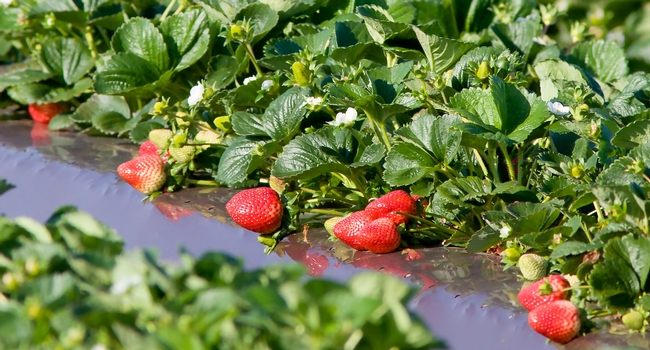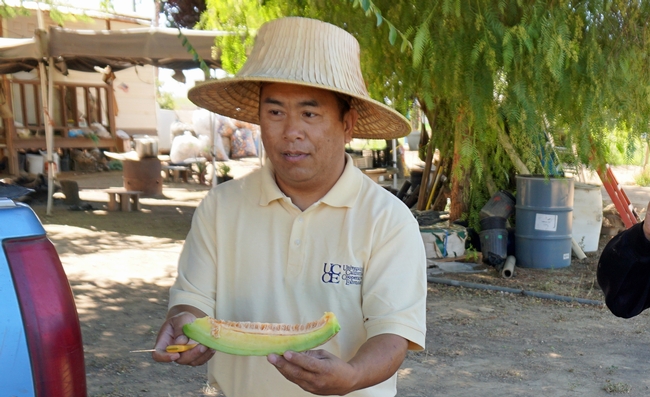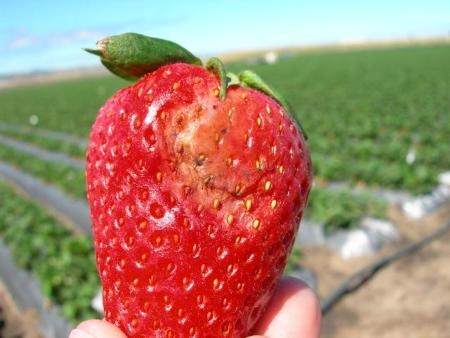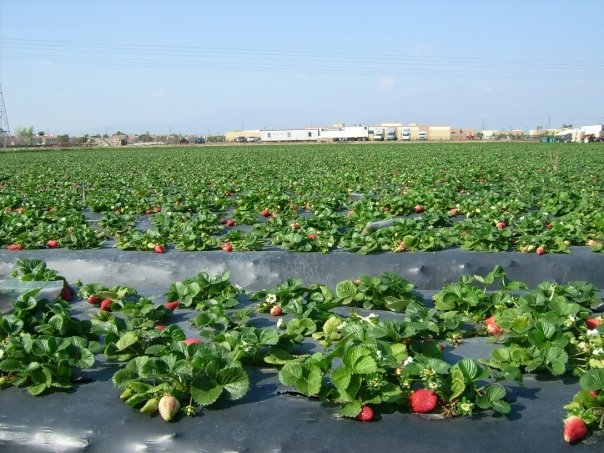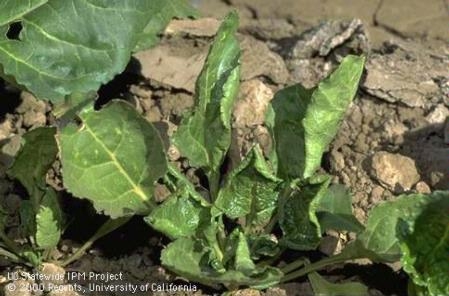Posts Tagged: Strawberries
COVID-19 not a current threat to the food system, but California farmers still feel the pinch
COVID-19 does not currently pose major threats to overall global food security because adequate stores of staples — like wheat and rice — remain available. But the sustainability of California specialty crops may face greater hurdles, reported Laura Poppick in Scientific American.
Poppick spoke with two UC Agriculture and Natural Resources (UC ANR) scientists for perspective on the future of California agriculture considering the market and production constraints posed by measures to slow the spread of the coronavirus.
“Everybody is scrambling to figure out what to do,” said Gail Feenstra, deputy director of UC ANR's Sustainable Agriculture Research and Education Program. “There's just a lot of disruption.”
Specialty products — such as some fruits and organic produce grown on smaller-scale farms — are often sold to restaurants and farmers markets, many of which are now closed or have reduced service, rather than directly to the grocery stores that are still operating. Even if these farmers are able to continue working, they may have limited places to sell their goods, the article said.
Strawberries are another crop likely to be affected. Laborers picking strawberries typically work more closely than is advisable to prevent the spread of the virus, said Mark Bolda, a University of California Cooperative Extension farm advisor based in Watsonville. He said farmers are already making plans to spread workers between rows.
Strawberries, however, hit prime ripeness within a narrow window of just two to three days and must be picked quickly, Bolda says. Spacing workers may slow picking, and, "being slower is expensive."
Rainy winter is good news for Central Valley strawberries
Abundant rainfall in January and February 2019 bodes well for the forthcoming Central Valley strawberry season, reported Reuben Contreras on ABC Channel 30 Action News in Fresno.
Contreras interviewed Michael Yang, small farms and specialty crops Hmong agricultural assistant with UC Cooperative Extension.
"We need the water as much as we can right now," Yang said. He said the rain will add to the groundwater supply most farmers use to grow their crops, plus it will make the strawberries sweeter.
Cool weather is also welcome.
"Strawberries need cool weather but in the summer, the hot weather with the variety strawberries will not survive the heat," he said.
In the San Joaquin Valley, strawberries are picked from late March to early June. If the wet weather pattern established in January and February continues through the spring, that could spell trouble for strawberry farmers. Wet strawberries can rot in the field.
California farmers excited and apprehensive about El Niño
Many farmers and other California residents are hoping that the strong El Niño forming in the Pacific Ocean will bring abundant rain to the drought-stricken Golden State this winter. However, the possibility of too much rain in a short period of time is also a concern, reported Phillip Joens in Pacific Coast Business Times.
In 1997, the last time meteorologists recorded a strong El Niño, strong rains from April through August caused $1.1 billion in damage to California's economy because of severe flooding and landslides, the article said. In February of 1998, weeks of rain caused an additional $550 million in damages to the state's economy.
For the strawberry industry, flooding can be tolerated part of the season, but closer to harvest, flooding is not good, said a UC Agriculture and Natural Resources (UC ANR) expert.
Surendra Dara, the strawberry and vegetable crops advisor for UC ANR Cooperative Extension for Central Coast counties, said strawberries are planted early in the winter. Young plants might be able to survive torrential downpours or even flooded fields, but rain later in the season is harmful to mature berries.
“Not only the rain, but the dampness,” Dara said. “If there's too much moisture for too long, (strawberries) … will rot in water, that kind of thing.”
Strawberry season opens in the San Joaquin Valley
Strawberries in the central San Joaquin Valley are ripening about two weeks earlier than normal in 2015, reported Robert Rodriguez in the Fresno Bee. The story was localized and also used in the Merced Sun-Star and Modesto Bee.
Normally strawberry season starts in early April, but in the Fresno area Rodriguez found a dozen roadside stands already selling the springtime favorite.
Rodriguez spoke to Michael Yang, an agricultural assistant with UC Agriculture and Natural Resources Cooperative Extension in Fresno County. Despite warmer temperatures and a shortage of water for some growers, the overall quality of the crop looks good, Yang said.
“You may see that on some farms where the growers have had trouble getting enough water,” Yang says. “The fruit may not size up, but that sweet taste will still be there.”
Most of the region's growers produce Chandler or Albion strawberries, two cultivars that were developed by University of California researchers.
Merced Sun-Star reporter Ana Ibarra interviewed UC ANR advisor David Doll, who said the strawberry industry in Merced is small but important. According to Doll, the success of this year's strawberry season will be mainly dependent on the heat. Just as the heat accelerated the season, it also can be cut short if the high temperatures continue, he said.
Crop diseases a concern in strawberries and tomatoes this year
Record reporter Reed Fujii spoke to Brenna Aegerter, UC Cooperative Extension advisor in San Joaquin County. She said she's never seen such losses due to beet curly top virus.
"In my eight years here in this county, I had only seen curly top in two fields," she said. "The virus was present in every tomato field I have seen this season, though in most fields, the incidence was so low as to not be a concern."
Beet curly top is spread by beet leafhopper. The insect don't like tomatoes and peppers, but will briefly feed on the crop and infect them before moving on, Aegerter said. The high leafhopper population is most likely a cyclic peak.
"The hope is we'll go back next year to not seeing it," Aegerter said.
Amy Asman of the Santa Maria Sun used UC Cooperative Extension materials for her story on the serious pallidosis-related disease threat in local strawberries. For detailed information about the strawberry decline, see UCCE advisor Surendra Dara's story in the Strawberries and Vegetables blog.

